The Most Expensive Wetsuits Are Not Always the Fastest
I built a wetsuit factory in 1987, not out of choice, but desperation. I designed a triathlon wetsuit in 1986 as a thought experiment, and fell slow-motion-backward into the industry.
I began by contracting with an existing surf wetsuit factory to make my wetsuits, but the demand for the wetsuit brand I founded (Quintana Roo) outstripped the supply. Forty wetsuits a month became 200, which is the most my contractor could make.
As the demand rose from 200 wetsuits a month to 800 I bought sewing and cutting machines (on credit) and got a night job waiting tables to pay for raw materials, and to make payroll. Ponzi schemers and drug abusers relate tales of their reluctant slide down into a paradigm from which they could not escape, and in much the same way I became a reluctant wetsuit maker. I gained experience-under-protest, and there is a saying: Experience is that thing you get when you don't get what you want. In many ways that was true for me (building that factory was the best and worst thing that ever happened to me). But experience it was and what there is I'll share with you all.
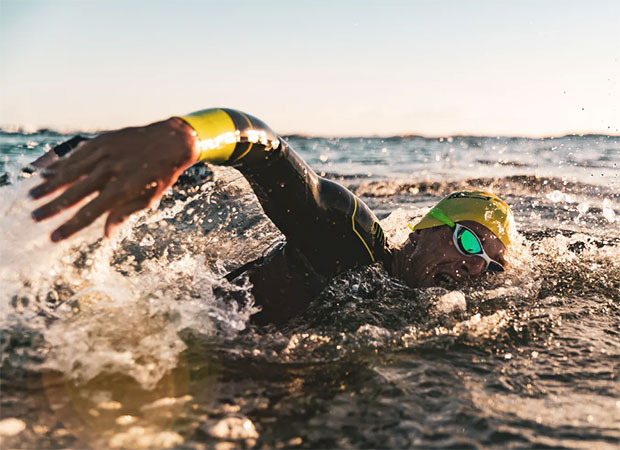
I will tell you what I believe I know, and usually label it thusly. I’ll also tell you what I only believe, and usually label it thusly. I'm pretty sure what I will write will be countered by many experts who'll lecture me on the errors in my thinking. Still, if any of what I write helps you make a decision, great.
Recent Knowledge
I'll write what I've written before in ensuing days; let me start with a discovery that is rather new, at least to me. It should come as some solace to you that not only are some of the most expensive wetsuits no better for you than a wetsuit a level or two down in price, in some cases the most expensive wetsuits are actually slower (than other wetsuits) when you swim in them.
This flows from what I consider influence on the process by elite triathletes who come from a swim background. It probably took 15 years since my original wetsuit design before pro triathletes ceased their tantrums. For most, the better you are as a swimmer the less you get out of a wetsuit, speedwise, and the more your advantage as a swimmer diminishes over those who swim less well. Accordingly, I can understand why good swimmers balked at the entire idea of the swimming wetsuits. But that semi-outrage translated to ill-informed style decisions. It was common for the best swimmers to insist they swam faster without a wetsuit. This opinion, of course, lasted one race. But it didn’t change the minds of these swimmers regarding the style of wetsuit they chose. They wanted the least rubber on their bodies as possible, not realizing that this was just a continuation of thinking not based on fact. Good swimming triathletes from that day ‘til this complain when they lose the “feel of the water.” For most of us, you can either retain the feel of the water and go slower, or jettison this imperative and go faster.
Nevertheless the very best swimmers – when allowed input on how to construct a wetsuit – often choose design features that help them feel as if they aren’t swimming in a wetsuit at all. And that’s great, unless it makes you slower. If you have an extremely well developed swim stroke, and you (for example) gain a decent amount of propulsion from the kick, or at least your legs are sufficiently atop the water so as not to slow you down, you may choose a design that doesn’t have as much rubber mass from the thighs to the ankles. You may go faster in a wetsuit like this. Just, who are "you"? Is this you I'm describing?
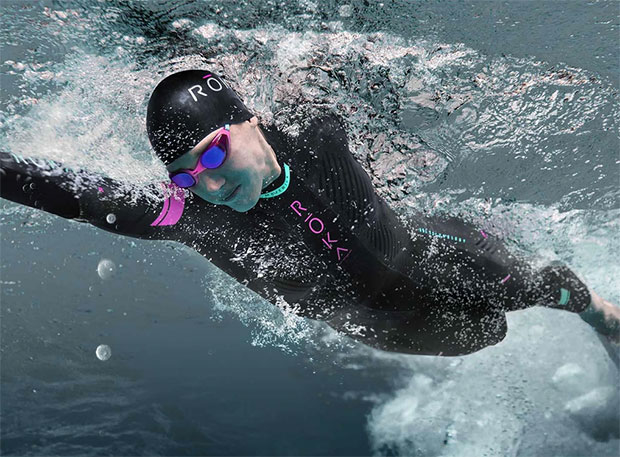
I’ll be writing about Zone3’s wetsuits this week, and when they offered to send wetsuits for testing I declined the Vanquish, instead asking for the Aspire. The Vanquish is an $895 wetsuit, the Aspire a $695 wetsuit. I’m sure the Vanquish is a fine wetsuit, but I don’t need and, frankly, am not sure I want a “Sensory Catch Panel” or the “trademark Pro Speed Cuffs on the arms and the legs. I placed what I believe is the first “catch panel” on a triathlon wetsuit, in the early 1990s, and took orders for thousands of that new wetsuit model. But I skipped a step. I designed, prototyped, and sold this wetsuit before I tested it. When I did get around to testing the suit I was chagrined to find that it swam one and-a-half seconds slower, per 100 yards, than our standard wetsuit. Upon underwater inspection we discovered our new wetsuit did catch really well. It caught and held air. The swimmer spent time every stroke shedding the air from the catch panel during the stroke which is the point of the engineer’s famous phrase: One test is worth a thousand expert opinions.
For this and other reasons I cast a jaundiced eye toward features that “improve” upon standard rubber arms and legs. Mind, a lot of catch panels do test very well. But you have to test them. One advantage I had was a factory. My wetsuits were designed, and the rubber cut, glued and sewed, 50 feet from my office. That luxury is rarely enjoyed by wetsuit brand managers these days. But here’s the thing: If you let pro athletes who’re really good swimmers lead your design process, it is my experience that they’ll lead you toward a suit that grants them that natural feel – like they’re swimming without a wetsuit on. A couple of years ago we tested DeBoer’s wetsuits, and what we found is that these wetsuits were perfect… for good swimmers. But rubber has to be taken out of the wetsuits in strategic places to give swimmers that great feel. They were terrific to swim in. But they were not universally faster. In our testing the better the swimmer, the better a DeBoer wetsuit was for that swimmer.
Me? I need float in the arms and legs of a wetsuit, if I’m to swim my fastest. What I read about the Zone3 Aspire (the less expensive suit) is that it offers “Up to 30% more buoyancy than standard neoprene.” Great! Because for 99 percent of my swims I have great feel for the water, since I’m swimming in no wetsuit at all. For the other 1 percent of my swims – mostly when I’m racing – I’m going to sacrifice feel for the water in favor of the “feel” of getting out of the water ahead of where I would be if I was in a less buoyant wetsuit.
I remember, quite a few years ago, TYR made a series of wetsuits which included the CAT 1, CAT 2, CAT 3, CAT 5, and the Freak of Nature. The “Freak,” as we called it, sold for $1,500 (this goes back almost 10 years). It had a cosmetic scheme that made its wearer look like a superhero, which is exactly what Andy Potts looked like exiting the water in first place in a Freak. However in my testing I found that the CAT 5 to be the very fastest of all the wetsuits, regardless of manufacturer, regardless of model. (It did have a failing, that it was easy to blow out the calf when putting the wetsuit on.) The point is that the CAT 5 was half the price of the Freak, and for me it was equal to or faster than the Freak.
The moral is, buy the wetsuit designed to make you the fastest, safest, warmest (or least warm, depending on where you live and race), and best fitting. This may be the most expensive wetsuit in a brand’s line, but it may well not be.
I will write more in successive days on Fullsuits (long sleeved) versus Longjohns (sleeveless); on 1-piece versus 2-piece; on “performance” versus “recreational” patterns and materials; on the best use of wetsuits (putting them on, taking them off; caring for your wetsuit); and on the models made by the leading brands.


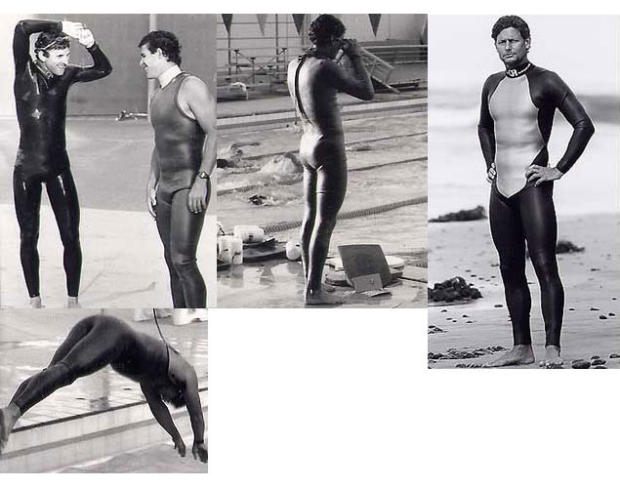
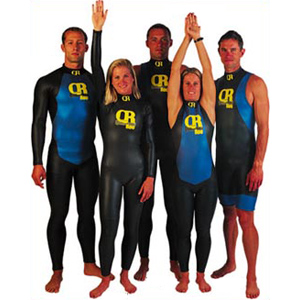
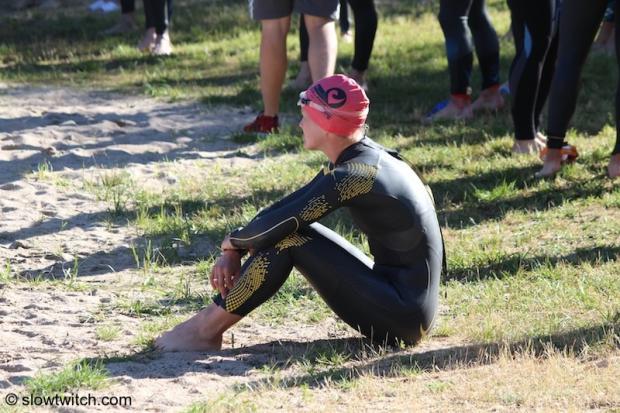
Start the discussion at forum.slowtwitch.com